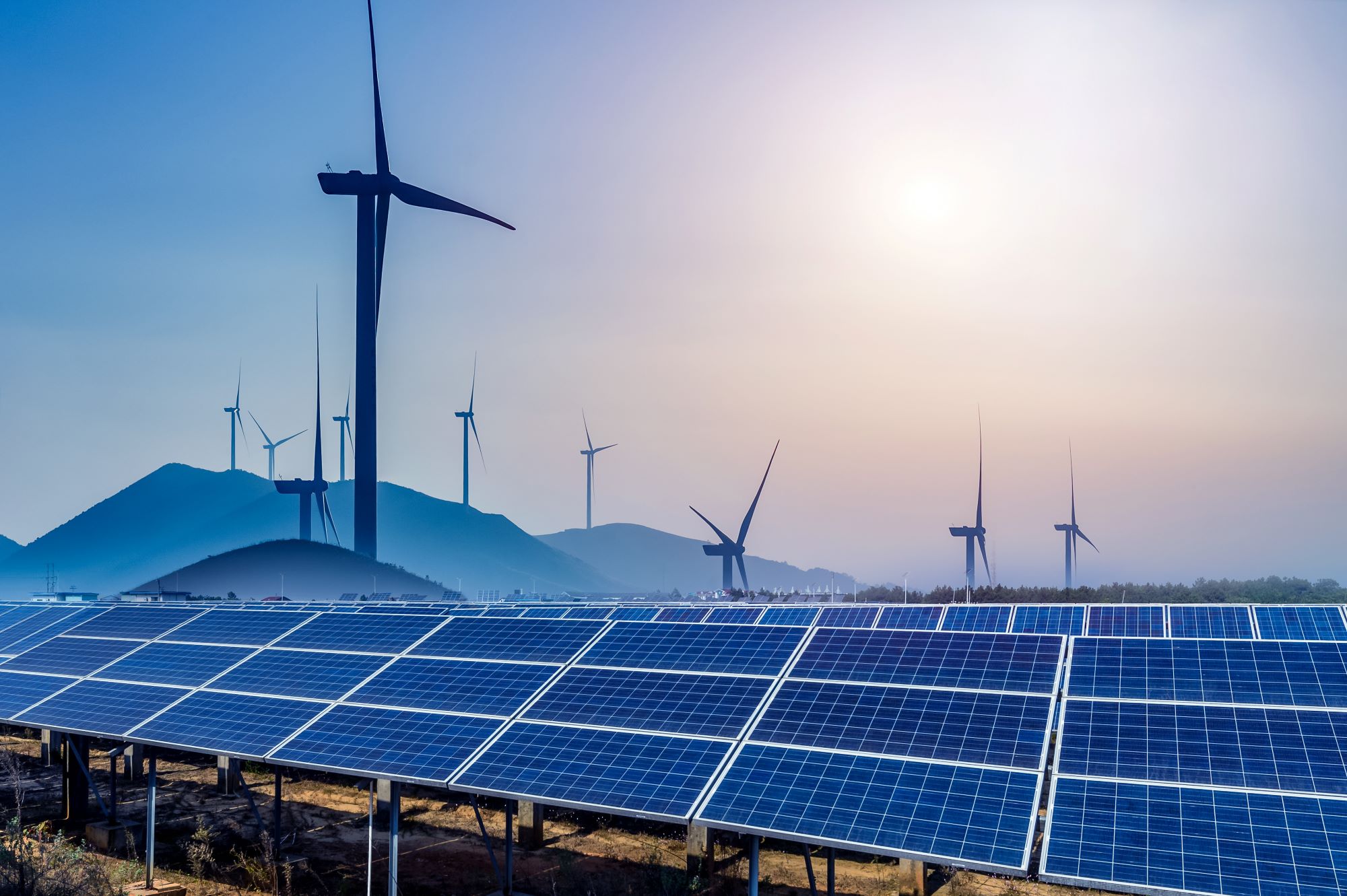February 2, 2024
The effects of climate change are all around us. 2023 was the hottest year in recorded history. Arizona experienced so many days of record heat that heat-related deaths soared. The Colorado River receded to its lowest level in history, and the Great Salt Lake is on the verge of drying out, a potential ecological disaster that could irrevocably alter the weather of the Wasatch Valley.
What can be done? While the effects of climate change may feel daunting, there are things that we can do to mitigate its impacts and stop additional warming.
The most urgent and effective action the region must take to combat climate change is to reduce the greenhouse gas emissions that are driving it.
Here at WRA, we’re focused on the sectors that are responsible for most of the harmful greenhouse gases spewed into the air every day, and that includes fossil-fuel powered plants. In this blog, we’ll zero in on our work with electric utilities, and why we’re pushing the major utilities in our region to reduce greenhouse gas emissions 80% by 2030.
Eighty percent by 2030 is not a figure WRA pulled out of thin air. The best science is clear: we must reduce economy-wide emissions of climate pollution at least 50% by 2030 and achieve net-zero carbon emissions by 2050 to avoid the most catastrophic impacts of climate change. In 2021, the United States rejoined the Paris Agreement, an international treaty on climate change with the goal of keeping the rise of average global temperatures to below 2 degrees Celsius (3.6 degrees Fahrenheit). The same year, the U.S. set a Nationally Determined Contribution to reduce net greenhouse gas emissions 50-52% by 2030.

The Science Behind the Numbers
Following the setting of the Nationally Determined Contribution, various modeling efforts have been undertaken to identify the policies and quantify the emission reductions needed across various economic sectors in order to achieve our national emission reduction targets. The most compelling study is a meta-analysis of the results of six modeling efforts. This meta-analysis, developed by researchers at the Electric Power Research Institute, the Lawrence Berkeley National Laboratory, and other institutions, found that rapidly decarbonizing the electricity sector is key to meeting the country’s Nationally Determined Contribution.
Specifically, the six models show that to meet the Nationally Determined Contribution, power sector emissions must decline an average of 84% below 2005 levels by 2030. A notable consistency across these various modelling efforts is the need for a rapid shift away from coal-fired generation. Another theme across the models is a precipitous decline in the use of coal for electricity. Under modelled scenarios, coal generation declines by 90% to 100% by 2030 to meet the national greenhouse gas emissions target. Today, many utilities across our region are reducing climate pollution from electricity generation, but not at the scale and pace we need. Most electric utilities are not on track to achieve this science-based 80% by 2030 standard. And this puts our climate at extreme risk.

Leaders and Laggards
Over 26 utilities in the U.S. have already committed to achieving at least an 80% reduction in carbon emissions or to transitioning to a generation supply comprised of at least 80% clean energy resources – like wind, solar and battery storage – by 2030.
With proper planning, utilities can meet decarbonization goals in a reliable and cost-efficient manner. An analysis by Energy Innovation finds 99% of the existing U.S. coal fleet is more expensive than new solar or wind alternatives. A study by UC Berkeley found that the U.S. can reach 90% clean energy by 2035 without building a single new fossil gas plant. And the market forces supporting the transition to clean energy are clear. Solar power is now at its lowest cost and is the cheapest source of energy, and a new analysis by the clean energy think tank RMI predicts the price of photovoltaic energy will halve by 2030. Gas remains a highly volatile commodity affected by everything from extreme weather and supply logistics to overseas conflicts.
In the Interior West, our major utilities are at varying degrees of progress in meeting this goal. Some, like Colorado’s Xcel Energy, have emerged as regional leaders in their decarbonization efforts. WRA has worked closely with Xcel, Colorado’s largest producer of electricity, to develop the legal and regulatory framework that put the utility on a path to reduce carbon pollution from its Colorado operations more than 85% by 2030 as compared to a 2005 baseline. PNM, New Mexico’s largest electricity provider, has committed to 80% emissions reductions by 2030; PacifiCorp, which provides power to customers in six states, projects it will reduce its emissions 78% by 2030.
In contrast, utilities in Arizona, like Salt River Project (SRP) and Arizona Public Service (APS), are woefully behind many of their counterparts in other states. As the second-largest electric utility in Arizona, SRP has one of the weakest plans among utilities in the West to reduce its greenhouse gas emissions. It’s also the only major utility in the West with no plan to transition away from expensive and highly polluting coal plants, continuing to put the health of all Arizonans at risk.
In its recent integrated resource plan, APS states its resource mix will include 65% clean energy resources – a figure that includes nuclear power – and 45% renewable resources by 2030. The utility plans to reach a carbon-free resource mix of 73% by 2031 and will remain at that level until 2038. This equates to roughly a 46% reduction in carbon emissions by 2030, far below the 80% required to protect our communities and ecosystems. In addition, APS does not plan an accelerated closure of the coal powered Four Corners Generating Station, despite cost projections showing significant savings if the plant is closed in 2028.
WRA is committed to working with SRP staff and board, legislators, city and county officials, business leaders, conservation allies and grassroots organizations to help both utilities develop stronger decarbonization goals. We urge APS to retire Four Corners by 2028, and for the Arizona Corporation Commission to direct the utility to accelerate its procurement of wind, solar, and storage resources.
Climate science is clear that we must act now, in this decade, if we’re going to stop global warming from rising beyond 2 degrees Celsius.
Achieving 80% by 2030 is feasible, affordable, and critical to meeting our climate goals. This transition will benefit our economy and our health, and we can do it without compromising the reliability or affordability of our power system.




